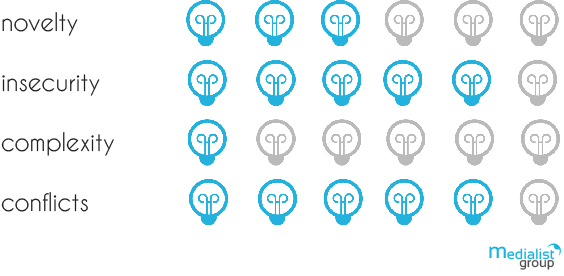Do you also know this situation where you see something in the distance and would like to take a closer look, but it is too far away? Who hasn’t wished for a zoom lens with which they can take a closer look? Thanks to some scientists from the University of California San Diego, this wish has come true. They developed the prototype of a contact lens, the Biomimetic Soft Lens, which is controlled by the movements of the eye. Objects can be zoomed in and out by simply blinking twice.
Biomimetic Soft Lens – The function in detail
The biomimetic lens consists of a stretchable polymer. This thin film reacts to the electrical signals generated by the eyes when they move.
The scientists have measured the electrooculographic signals generated when the eyes perform certain movements. This makes it possible to measure whether the wearer of the Biomimetic Soft Lens is looking up, down, left or left. The number of blinks is also measured. The lens reacts to these impulses and carries out the corresponding processes. With the current prototype, even the focal length can be changed depending on the actions performed.
“Even if your eye cannot see anything, many people can still move their eyeball and generate this electro-oculographic signal,” Shengqiang Cai, Lead Researcher
Originally, the telescope lenses used originated from DARPA research, which developed them as super-thin cameras for flying drones. The transformation into vision-enhancing systems finally took place in 2013, before the Biomimetic Soft Lens was developed for the general public.
The current models can only be worn for a short time, as the scientists are already working on increasing the wearing time in order to make the innovation usable in the long term.
Innovation Profile: Biomimetic Soft Lens
Contact lenses are being considered in more and more patents. Whether for mixed reality or image recognition, many companies develop smart lenses for their applications. The Biomimetic Soft Lens is another addition to human capabilities to address new, technologically supported aspects.

The Soft Lens is very innovative in terms of its ability to innovate, as there has been no comparable development so far. The complexity is extremely low, since control via eye movement is very simple. However, since the lens has to be inserted into the eye, some people will be insecure and will be more critical of Biomimetic Soft Lens. Therefore, uncertainty and conflict content are higher.
Conclusion: The innovation offers a lot of potential for everyday life. When the last problems have been eliminated, development has great potential for everyday and professional life. More on development can be found in the study by scientists at the University of California San Diego.
Post picture: CBS Interactive Inc.

